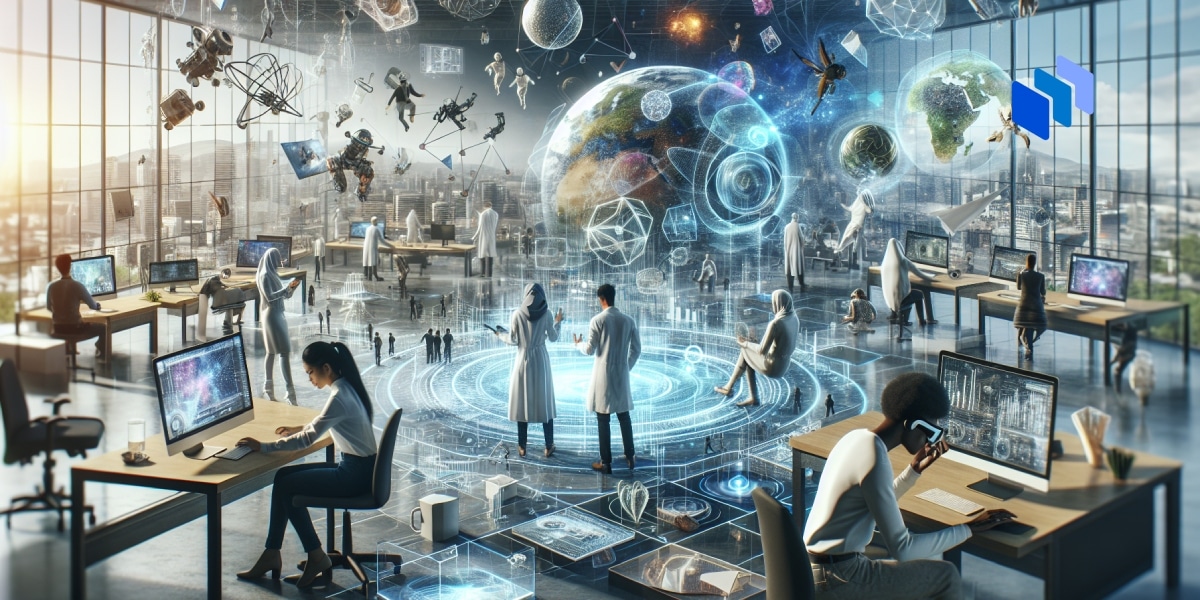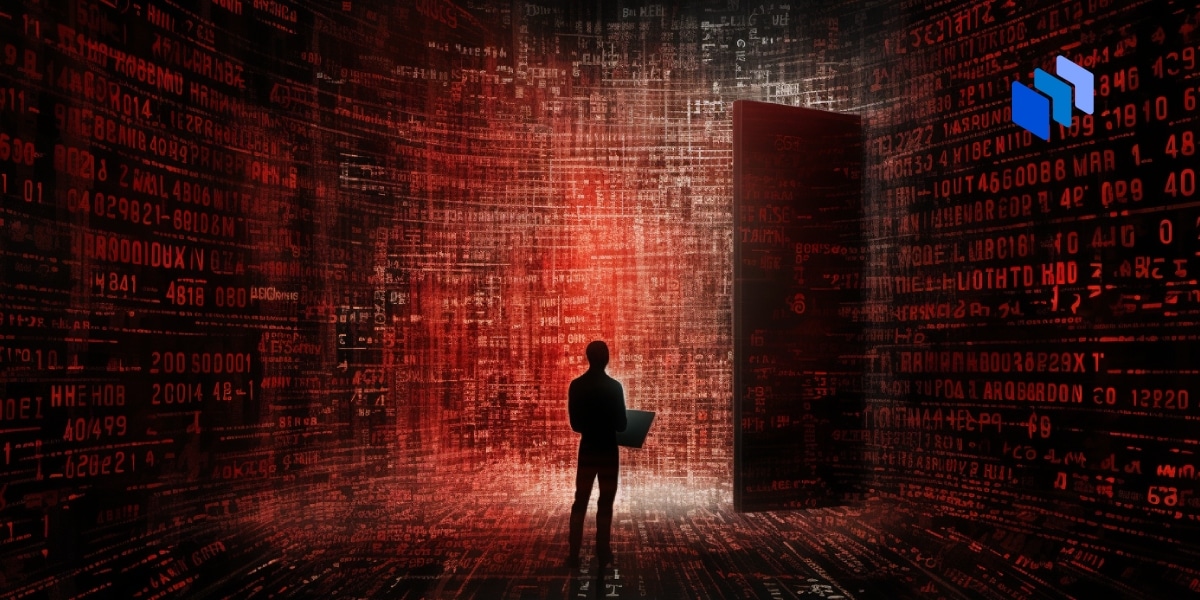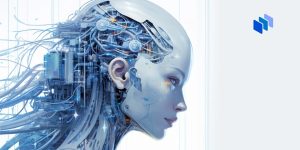Spatial computing has become the new buzzword since Apple announced that its spatial computer, Apple Vision Pro, will go on sale early in February. Although consumer applications are attracting the headlines, the most significant impact and market growth is happening behind the scenes of enterprises.
At the enterprise level, spatial computing offers various benefits and opportunities across different industries and sectors. The technology can enable real-time training and skill development, facilitate remote assistance and collaboration, and improve data visualization and analytics.
A recent market report shows that the spatial computing sector will be worth over $280 billion by 2028, a 23% CAGR rise from its 2023 valuation ($97 billion). A significant portion of this exponential growth will come from enterprises using spatial computing for training, design collaboration, digital twins, and more.
Now that this technology is here to stay let’s look at how enterprises can use spatial computing in 2024 and beyond.
Key Takeaways
- Apple’s announcement of the Apple Vision Pro has brought spatial computing into the spotlight.
- The market has a predicted value of over $280 billion by 2028, driven by enterprise applications.
- The top enterprise use cases of spatial computing include data analytics, real-time training and skill development, enhanced visualization and design processes, remote assistance and collaboration, and digital twins.
- While anticipating more use cases, user privacy and data security concerns must always be kept front of mind.
Top 5 Enterprise Use Cases of Spatial Computing
Below is a deep dive into the common use cases of spatial computing at the enterprise level with examples.
5. Data Analytics
Enterprise data analytics can be daunting and takes a lot of time to compute. However, by bringing data into 3D virtual or augmented environments, relationships and patterns hidden in traditional 2D data plots can be more readily recognized.
For example, augmented reality allows data points to be overlapped and anchored to real-world objects, revealing new insights into sensor readings or simulation results. This can help engineers walk around overlaid data points to spot anomalies or clusters from different angles.
Similarly, virtual reality enables multidimensional data visualizations to be explored by moving around within the data environment. With VR in data analysis, users can leverage natural physical motions like head tilting to examine trends from new perspectives.
Advanced spatial interfaces such as gesture and voice control further enhance data interaction. Users can manipulate abstract data with intuitive hand motions or query the data space using natural language.
Leading enterprises like NASA already use AR/VR applications to visualize multidimensional aerodynamics simulations around virtual prototypes. In an article last year, NASA wrote that they use virtual and augmented reality to improve the analysis of Mars rover data in NASA’s Jet Propulsion Laboratory.
To quote Scott Davidoff, manager of NASA’s Human-Centered Design Group at JPL:
“When you look at a network diagram as a system in 3D, it turns out your perception does something different. We made a data world where an analyst could look at any science or engineering problem and see patterns and correlations more clearly than they can in a flat version.”
4. Real-time Training and Skill Development
Another use case of spatial computing in the enterprise is training and skill development, which can help to enhance the learning and performance of employees and workers.
Spatial computing can provide immersive and realistic training scenarios where learners can practice and master various skills and tasks without the risk of injury or damage.
This was evident at CES 2024, where PIXO VR and Dimension X announced the creation of an enterprise-ready content creation platform that allows enterprises to utilize various AR/VR/MR spatial computing applications to meet their training needs.
And this week, Techopedia spoke to Vishal Shah, general manager of XR (AR/VR) & Metaverse at Lenovo, who walked us through the use cases of training in an extended reality world.
In the healthcare industry, for instance, spatial computing can enable medical professionals and students to learn and practice surgical procedures, diagnosis, and treatment using virtual patients and scenarios. This can help improve their knowledge and confidence and reduce the need for cadavers and animals.
Spatial computing can also help train and guide manufacturing and industrial sector workers on how to operate and maintain complex machines and equipment. This can come in the form of interactive and contextual instructions for workers to see and follow the steps and procedures overlaid on their physical environment.
3. Enhanced Visualization and Design Processes
With spatial computing, businesses can better improve their design and development process, reduce costs and errors, and increase efficiency and quality.
For example, in the automotive industry, spatial computing can enable designers and engineers to create and test virtual prototypes of cars without the need for physical models. This can save time and money and allow for faster iterations and feedback.
It can also help conduct design reviews and presentations, where stakeholders can view and interact with the car models in VR or AR and provide their inputs and suggestions. Think of Computer-aided Design (CAD) but on another level.
Another example is in the construction and architecture industry, where spatial computing can help to visualize and plan buildings and structures before they are built.
In this case, architects and engineers can leverage spatial computing to create and explore virtual models of their designs and test them for feasibility, functionality, and aesthetics. The technology can also help engineers communicate and collaborate with clients and contractors, who can view and modify the designs in real time and provide their feedback and approval.
2. Remote Assistance and Collaboration
Remote assistance and collaboration are important elements of the enterprises that command an increasing demand for spatial computing sets. Through devices like Microsoft’s HoloLens 2, Vision Pro, and Magic Leap 1, experts and technicians working remotely can provide real-time guidance and support to field workers, customers, or partners to overlay digital information on the user’s view.
This can increase the efficiency, quality, and safety of the service, as well as reduce travel costs and downtime.
Spatial computing can also facilitate collaboration for distributed teams working on a huge project that requires projection. Instead of struggling to view a project model on a PC through a remote network, team members can use mixed reality devices to jump on a shared virtual space, where users can communicate, share data, and manipulate the project as if they’re sitting live inside a boardroom.
1. Digital Twins
Spatial computing brings digital twins — a virtual representation of an entity or system that exists in the physical world — to life through immersive augmented and virtual reality experiences.
Using AR/VR headsets, for instance, engineers can visually overlay and interact with digital twin models mapped to physical systems. This spatial connection enables intuitive comprehension of system performance against virtual simulations.
Experts can inspect digital twins from all angles, use gestures to control components and collaborate in VR to analyze designs, and the digital twins can be transformed from abstract data visualizations into interactive virtual replicas.
In this case, enterprises benefit from enhanced asset visibility, reduced downtime, and accelerated insights. With real-time sensor data feeding digital twin simulations and spatial computing closing the loop from virtual to physical, enterprises can optimize operations, maintenance, and training.
The Bottom Line
Spatial computing is not just a technological advancement but a shift reshaping how enterprises operate across various sectors.
Industry leaders like Apple, Microsoft, Google, Meta, and Sony spearhead this transformation through groundbreaking innovations in display resolution, audio technology, spatial AI systems, and wearable spatial computing devices.
While we look forward to more use cases of the technology, let’s not forget that the wheel of spatial computing is pulled by different adjacent technologies like artificial intelligence (AI) and machine learning (ML), blockchain, cloud computing, and extended reality technology (VR/AR).
These technologies collect and process vast amounts of personal and business data of their users, some of which include biometric data, user movements, and even user preferences. Therefore, efforts should be put in place to ensure user privacy and security of the data collected, processed, and used.






